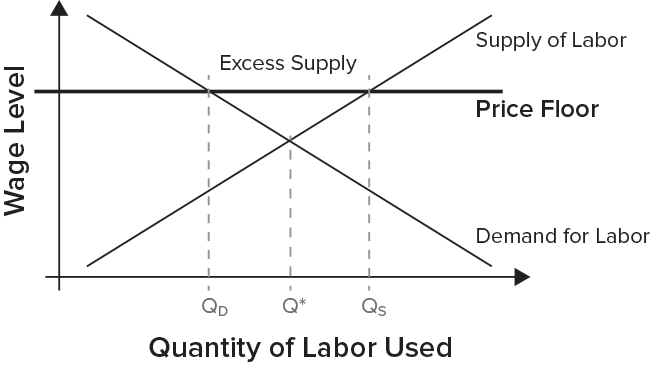
Why Brand Loyalty is about More than Taste
October 11, 2015The World’s First Drone Port
October 13, 2015The Westfield Valley Fair Mall has a split personality.
Because half is in Santa Clara, CA and the other part in San José, there are two legally mandated minimum wages. When we first discussed the division last year, the minimum wage in the Santa Clara half was $8.00 while in the San José part, it was $10.15. Now Santa Clara is up to $9.00 and San José, $10.30.
However, the Santa Clara City Council just announced that on January 1, 2016, its minimum wage will rise to $11.00. And San José said it will stay at $10.30.
So we still have the same problem…in reverse?
Where are we going? To a minimum wage solution.
Minimum Wage Problems at the Mall
A year ago we explained that the better workers gravitated toward the higher wage stores at the mall. That left what one store manager said was the “sketchy” help for the Santa Clara shops. Constrained from raising wages by the owner, he tried offering flexible hours to elevate quality.
Meanwhile, the owner of Wetsel’s Pretzels had a price and wage headache. She needed lower prices in her Santa Clara store because of nearby competition. However, having a second shop at the mall on the San José side meant she had to pay all employees the same higher San José wage. Expecting lower profits, she said she would have to take home less or decrease employee bonuses.
Gap though had the most interesting situation because its store was in both cities. Instead of figuring out the hours worked in each place, they just paid everyone the higher wage.
The Minimum Wage Debate
This tale of two cities in one mall provides a micro-version of the minimum wage picture. We have a federal legislative proposal for the national minimum wage to increase from $7.25 to $12.00 by 2020. We also have a “Fight for $15” group that House minority leader Nancy Pelosi supports. Add to that the states and local municipalities that have passed their own minimum wages and you have a patchwork of incentives. (The Berkeley CA City Council will have an 11/10/15 vote on a 2020 $19 minimum wage.)
A summary of state minimum wages from the Department of Labor:

From: U.S. Department of Labor
For those of us who need a labeled map, I thought the following would come in handy:

Competing Arguments
Expressed in a Boston Fed report, the competing arguments on both sides are persuasive. Proponents emphasize the additional spending that will be created, the minimal, if any, job losses, and their support for low wage workers. Meanwhile, opponents of a higher minimum wage cite jobs lost, higher business costs and price increases. But who is right?
This week, in a NY Times Sunday Review Column, economist Alan Krueger added a new wrinkle to the debate. Saying it all depends on the wage, he believes the Congress should mandate a $12.00 minimum wage that states gradually adopt until 2020 when it becomes the law of the land. His reasoning? “Research suggests that a minimum wage set as high as $12 an hour will do more good than harm for low-wage workers, but a $15-an-hour national minimum wage would put us in uncharted waters, and risk undesirable and unintended consequences.”
Our Bottom Line: A Price Floor
Economists illustrate the minimum wage with a horizontal line they call a price floor. Floors are always above equilibrium because they prevent the price (wage) from moving down to equilibrium where they naturally gravitate because quantity demanded equals quantity supplied.
Below, you can see the horizontal line that represents a floor. Depending on the difference between the quantity supplied of workers at that wage (QS) and the quantity demanded (QD) for them, there might or might not be many unemployed laborers.

Some members of the Santa Clara city council expressed concern that an $11.00 price floor would create a small business exodus to San José and other lower wage neighbors.
![econlifelogotrademarkedwebsitelogo[1]](/wp-content/uploads/2024/05/econlifelogotrademarkedwebsitelogo1.png#100878)



